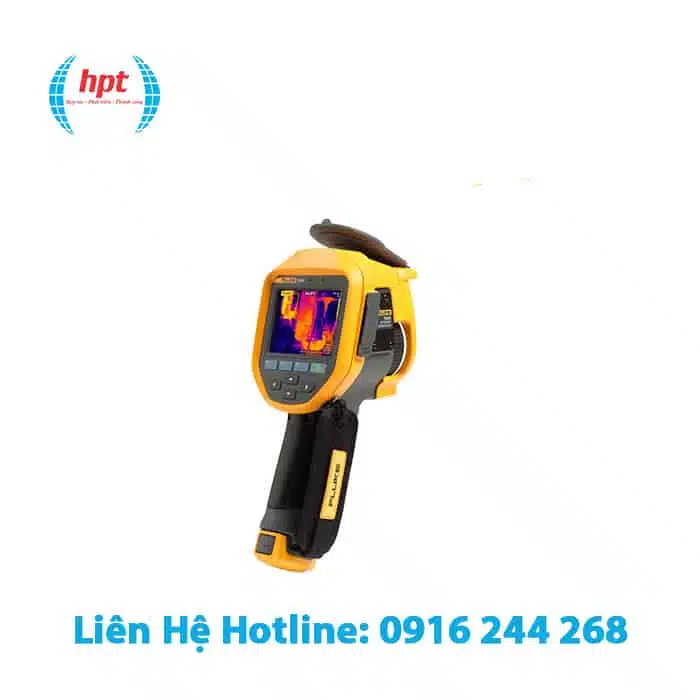
Camera Ảnh Nhiệt - Camera Đo Nhiệt Độ Hồng Ngoại - HPT Việt Nam
Camera ảnh nhiệt hay còn được gọi là máy ảnh hồng ngoại, camera nhiệt, máy đo nhiệt độ bằng hồng ngoại. Đây là thiết bị sử dụng bức xạ hồng ngoại để tạo nên các hình ảnh nhiệt, tương tự như các camera bình thường sử dụng ánh sáng để tạo ảnh.
THỐNG KÊ TRUY CẬP

Giám sát an ninh, kỹ thuật, phòng cháy chữa cháy, y tế,… đang cần một công nghệ là camera ảnh nhiệt. Vậy camera ảnh nhiệt là gì, nguyên lý hoạt động và ứng dụng của camera ảnh nhiệt luôn là điều được nhiều người quan tâm, bài viết dưới đây của HPT Việt Nam sẽ làm rõ những vấn đề này.

Camera ảnh nhiệt, camera đo nhiệt độ hoặc máy ảnh nhiệt
Camera ảnh nhiệt, camera đo nhiệt độ hoặc máy ảnh nhiệt là những công cụ mạnh mẽ và hữu ích được sử dụng rộng rãi, với các ứng dụng khác nhau, từ kiểm tra tòa nhà đến nghiên cứu và phát triển các thành phần công nghệ tiên tiến. Những công cụ này tiết lộ thông tin quan trọng và cung cấp bối cảnh quan trọng về nhiệt độ và các yếu tố tương tự mà các giác quan của con người thường không thể cảm nhận được.
Camera ảnh nhiệt là gì?
Camera ảnh nhiệt hay còn được gọi là máy ảnh hồng ngoại, camera nhiệt, máy đo nhiệt độ bằng hồng ngoại. Đây là thiết bị sử dụng bức xạ hồng ngoại để tạo nên các hình ảnh nhiệt, tương tự như các camera bình thường sử dụng ánh sáng để tạo ảnh. Khác với camera nhiệt bình thường hoạt động ở bước sóng 400-700 nm, camera nhiệt hoạt động trong các bước sóng dài tới 14.000 nm.
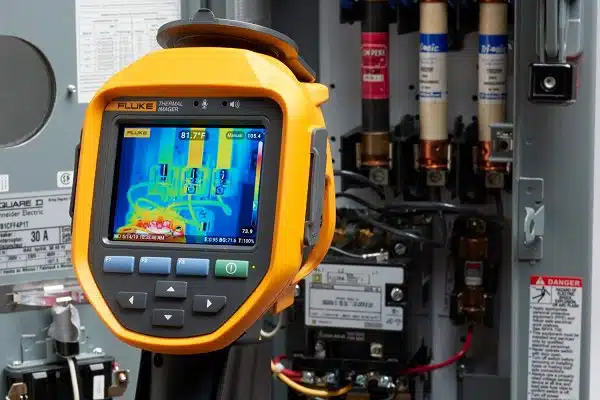
Camera nhiệt sử dụng các ngành công nghiệp, an ninh quốc phòng, tìm kiếm cứu hộ cứu nạn, điện lực
Nguyên lý hoạt động của camera ảnh nhiệt, camera đo nhiệt độ.
Camera ảnh nhiệt. camera đo nhiệt độ hiện nay có tiêu chuẩn cơ bản hiển thị sự gia tăng nhiệt độ của vật thể, các vật thể (khu vực) có nhiệt độ cao hiển thị bằng màu vàng và cam sẽ sáng hơn khi chúng tăng nhiệt độ. Ngược lại các vật thể (khu vực) có nhiệt độ thấp nhất được hiển thị bằng màu xanh hoặc tím.
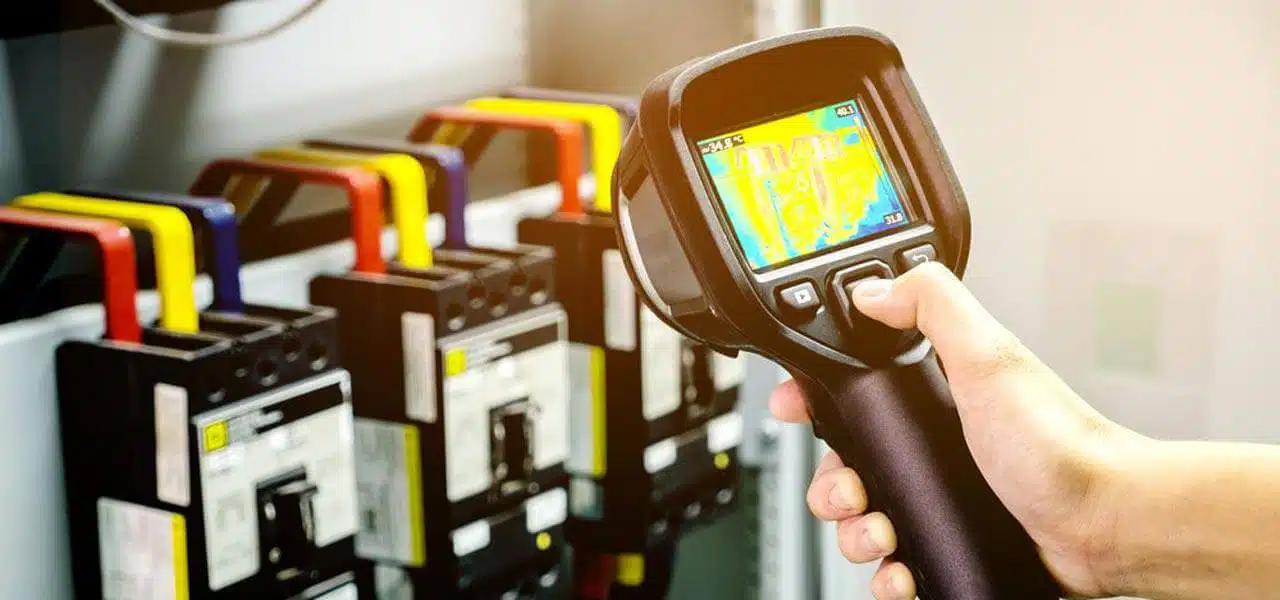
Năng lượng hồng ngoại chỉ là một phần nhỏ của phổ điện tử (tia game, tia X, tia cực tím, một vùng mỏng của ánh sáng khả biến, sóng hồng ngoại , sóng terahertz , sóng vi ba và sóng vô tuyến).
Camera ảnh nhiệt có thể bắt được các các bức xạ tương tư như camera bình thường bắt chụp ánh sáng. Có thể kết luận rằng camera nhiệt hoạt động tốt trong môi trường điều kiện không có ánh sáng, điều này giúp chúng hữu ích trong các hoạt động cứu họ và cứu nạn.

Một sự khác biệt lớn nữa giữa camera nhiệt và camera bình thường là các ống kính lấy nét không thể được làm từ thủy tinh. Thấu kính của camera nhiệt chủ yếu được làm từ các vật liệu như Germanium , canxi florua, silic tinh thể do bức xạ hồng ngoại có dải phổ dài từ 7m đến 14m. Hầu hết các ống kính của camera nhiệt được phủ 1 lớp chống phản xạ.
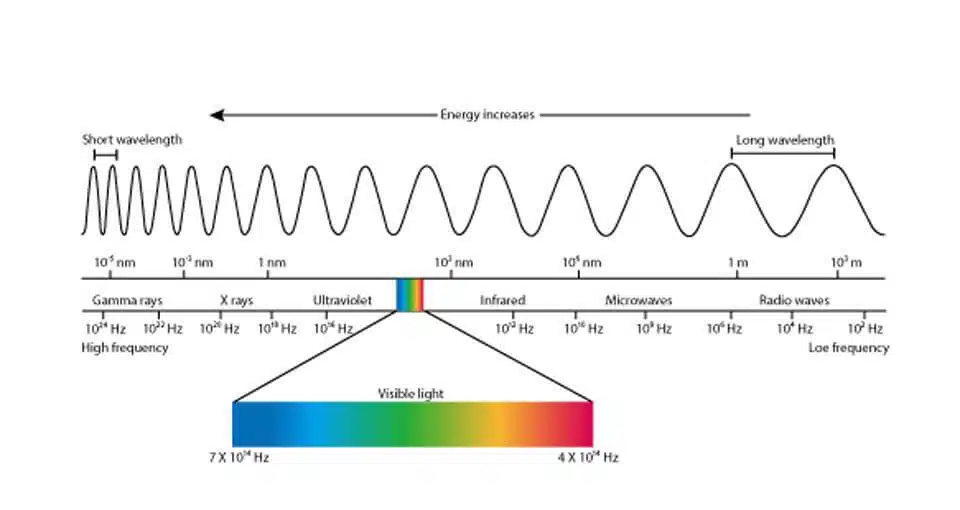
Camera ảnh nhiệt trên thị trường có các độ phân giải chính sau:
- 160×120
- 384×288
- 640×512
- 1024×768
Một số dòng sản phẩm camera ảnh nhiệt chất lượng tại HPT Việt Nam
Camera Ảnh Nhiệt Cầm Tay Hikmicrotech SP60H

Camera Đo Nhiệt Độ Cầm Tay Hikmicrotech SP40
Camera ảnh nhiệt Fluke Ti45 xem tại đây

Camera Nhiệt Guide PS400 (384×288, 40°C~800°C) xem tại đây
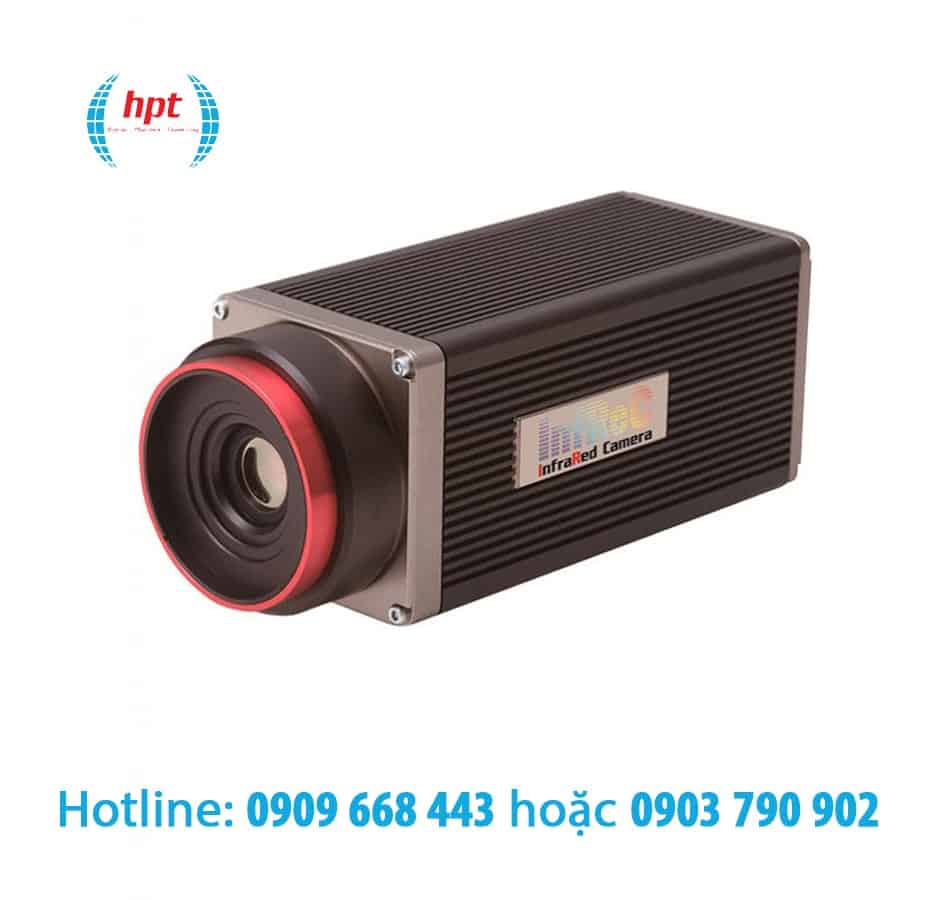
- Camera ảnh nhiệt hồng ngoại InfReC InfReC TS600 – Nhật Bản

- Camera ảnh nhiệt hồng ngoại R450 – Nhật Bản

- Camera ảnh nhiệt hồng ngoại R550 – Nhật Bản
LIÊN HỆ HOTLINE ĐỂ BIẾT THÊM THÔNG TIN VỀ SẢN PHẨM: 0916 244 268

Camera Ảnh Nhiệt
| Tìm thấy 48 sản phẩm
Ứng dụng của camera ảnh nhiệt
- Camera ảnh nhiệt chịu trách nhiệm thực hiện giám sát an ninh, đo nhiệt độ và phát hiện kịp thời những trường hợp bất thường như hỏa hoạn, cháy nổ… nhằm đảm bảo an toàn cho các doanh nghiệp, đặc biệt là các nhà máy, xí nghiệp sản xuất.
- Sản phẩm này thích hợp để lắp đặt cho các khu vực cần được bảo đảm an ninh cao, các địa điểm cảnh báo cháy hay các cảnh báo về an toàn trong công nghiệp.
- Kiểm tra và bảo dưỡng các thiết bị sản xuất trong nhà máy, xí nghiệp. Phát hiện và ngăn chặn kịp thời các sự cố như rò rỉ điện, nhiệt độ máy móc tăng cao do ma sát, các mối liên kết hở, đường dây điện bị quá tải…).
- Kiểm tra và theo dõi chất lượng sản phẩm trong sản xuất (như sản xuất linh kiện, chai thủy tinh, gốm sứ,…).
- Kiểm tra tòa nhà (điều chỉnh hiệu quả hoạt động của hệ thống thông gió, máy sưởi, điều hòa,…)
- Sử dụng camera nhiệt để nghiên cứu, phát triển sản phẩm trong phòng thí nghiệm.
Lưu ý khi chọn camera ảnh nhiệt, camera đo nhiệt độ hồng ngoại.
Khi chọn mua camera hồng ngoại, bạn nên xác định rõ mục đích sử dụng để làm gì? Cần giám sát ban đêm hoặc ngoài trời? Khu vực camera đang hoạt động có đủ ánh sáng để cung cấp không, và khu vực cần quan sát là bao nhiêu?
Ngày nay, camera giám sát ban đêm cũng có nhiều đèn LED hồng ngoại, nhưng chỉ có thể chiếu sáng rộng vài mét. Trong khi đó, camera hồng ngoại có thể nhìn rõ vật thể cách xa đến 45m. Do đó, trước khi mua bạn nên xem kỹ bảng thông số kỹ thuật, kiểm tra xem camera có cung cấp khoảng cách chiếu sáng hay không. Dù chỉ sử dụng trong phạm vi hẹp, bạn cũng nên dùng thử để biết chính xác chất lượng mà camera mang lại.
Các bước chuẩn bị để sử dụng camera ảnh nhiệt.
Để sử dụng sản phẩm, bạn cần đảm bảo nhiệt kế của mình được cấp nguồn đầy đủ, ngôn ngữ máy, cài đặt độ phát xạ chính xác, cài đặt bù nhiệt độ, cài đặt đèn hiển thị.
Điều này là cần thiết để đảm bảo độ chính xác cũng như thao tác thuận tiện với nhiệt kế hồng ngoại.
1. Kiểm tra dung lượng pin: Thực hiện việc này bằng cách kiểm tra trên pin hoặc trên màn hình. Cần đảm bảo dung lượng pin để máy hoạt động trơn tru và dễ dàng. Bạn có thể theo dõi mức pin bằng cách theo dõi pin hoặc xem trực tiếp trên màn hình.
2. Cài đặt ngôn ngữ: Đây là bước bắt buộc để bạn sử dụng tốt máy ảnh nhiệt.
3. Tiến hành lựa chọn độ phát xạ: Mỗi vật liệu đều có độ phát xạ nhất định, để hiểu rõ về nó bạn có thể tham khảo bài viết: “Ảnh hưởng của độ phát tia hồng ngoại đến hoạt động của camera nhiệt”. Việc chọn đúng chỉ số phát xạ giúp hiển thị hình ảnh nhiệt chính xác và nhất quán.
4. Cài đặt bù nhiệt trên nền: Đây là thao tác cần thiết để thiết bị trả về hình ảnh nhiệt phù hợp, hạn chế sai số, chênh lệch nhiệt độ. Bạn cần thực hiện trong Menu -> Đo lường -> Nền. Nếu có thể, hãy chọn nhiệt độ gần với nhiệt độ môi trường là tốt nhất.
5. Cài đặt độ sáng màn hình: chúng ta hoàn toàn có thể chủ động điều chỉnh mức độ sáng để dễ dàng sử dụng và thao tác kể cả những nơi không đảm bảo ánh sáng.
Bạn có thể chủ động thao tác cài đặt độ sáng để tiện theo dõi. Bạn thực hiện bằng thao tác: MENU -> CAMERA -> BACKLIGHT sau đó chọn chế độ phù hợp.
- Thấp: Chế độ sáng thấp.
- Trung bình: Chế độ sáng bình thường.
Các bước vận hành với camera nhiệt
Làm theo hướng dẫn bên dưới để kiểm tra và chụp ảnh nhiệt độ:
Bước 1: Khởi động máy ảnh nhiệt. Thực hiện các thao tác cài đặt cần thiết. Nhấn và giữ nút nguồn khoảng 3 giây để bật thiết bị
Bước 2: Mở nắp bảo vệ ống kính, đưa camera về đối tượng quan sát. Căn chỉnh hình ảnh mẫu vật cho chính giữa màn hình. Mở tấm bảo vệ ống kính của máy ảnh nhiệt
Bước 3: Nhấn cò để ghi ảnh nhiệt. Ghi lại các dữ liệu cần thiết.
Lưu ý rằng ở một số dạng máy ảnh nhiệt, người dùng có thể thêm chức năng zoom 2x hoặc 4x. Điều này không chỉ giúp bạn thao tác, quan sát dễ dàng hơn mà còn có thể gây trở ngại khi bạn phải thực hiện cài đặt mỗi lần để có hình ảnh ưng ý. Để thực hiện thao tác cài đặt: MENU -> IMAGE -> ZOOM. Bạn có thể điều chỉnh sang chế độ zoom 1x: Hiển thị kích thước hình ảnh 1: 1. Hoặc nếu muốn phóng to ảnh, bạn có thể chọn chế độ 2x, 4x.
Một số lưu ý khi sử dụng camera ảnh nhiệt an toàn.
1. Đảm bảo mức pin để máy hoạt động trơn tru, không bị gián đoạn.
Trước khi sử dụng thiết bị này, bạn cần kiểm tra mức pin để đảm bảo thiết bị hoạt động trơn tru và không bị gián đoạn. Bạn có thể lắp thêm hoặc thay thế pin để máy hoạt động tốt nhất.
2. Căn chỉnh hình ảnh mẫu ở giữa màn hình để chụp ảnh chủ động và dễ dàng nhất.
Khi thực hiện chụp ảnh nhiệt bằng thiết bị này, bạn nên căn chỉnh và hiển thị hình ảnh hiển thị của mẫu vật sao cho nằm chính giữa màn hình, điều này giúp hiển thị nhiệt độ một cách chính xác, hỗ trợ việc quan sát chủ động.
Bạn có thể tự điều chỉnh theo ý thích của mình hoặc làm theo điều hướng tích hợp trên màn hình LCD kỹ thuật số.
3. Đóng nắp bảo vệ ống kính sau khi sử dụng, điều này giúp tránh bụi bẩn, đặc biệt bảo vệ ống kính khỏi độ ẩm hoặc các yếu tố bên ngoài khác.
4. Vệ sinh và bảo dưỡng camera nhiệt đúng cách để tăng chất lượng hoạt động cũng như tuổi thọ của thiết bị.
Không riêng gì camera ảnh nhiệt, sau khi sử dụng các thiết bị đo nhiệt độ, bạn cần vệ sinh và bảo quản đúng cách để tăng chất lượng hoạt động cũng như tuổi thọ.
Lưu ý, khi vệ sinh, hạn chế để nước vào máy vì một số sản phẩm không được trang bị khả năng chống nước. Tiếp xúc trực tiếp với nước có thể dẫn đến hư hỏng, ảnh hưởng đến hoạt động của máy.
Để bảo quản, nên để máy trong túi đựng, nên để trong tủ kính. Điều này giúp máy tránh bám bụi, hạn chế ẩm mốc sau thời gian dài không sử dụng.
LIÊN HỆ HOTLINE ĐỂ BIẾT THÊM THÔNG TIN VỀ SẢN PHẨM: 0916 244 268

Admin
Link nội dung: https://pi-web.eu/camera-anh-nhiet-camera-do-nhiet-do-hong-ngoai-hpt-viet-nam-1736093710-a3601.html
